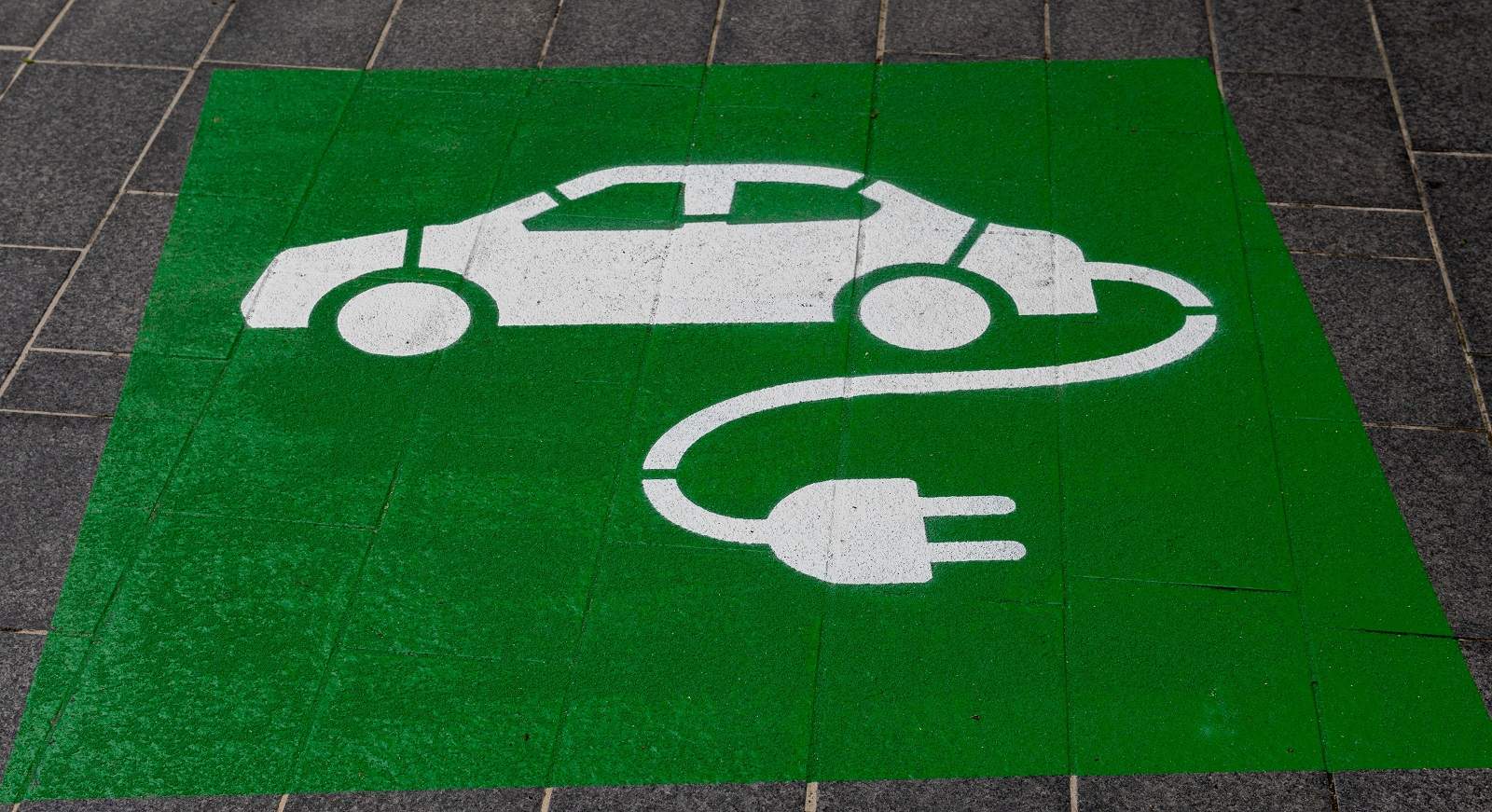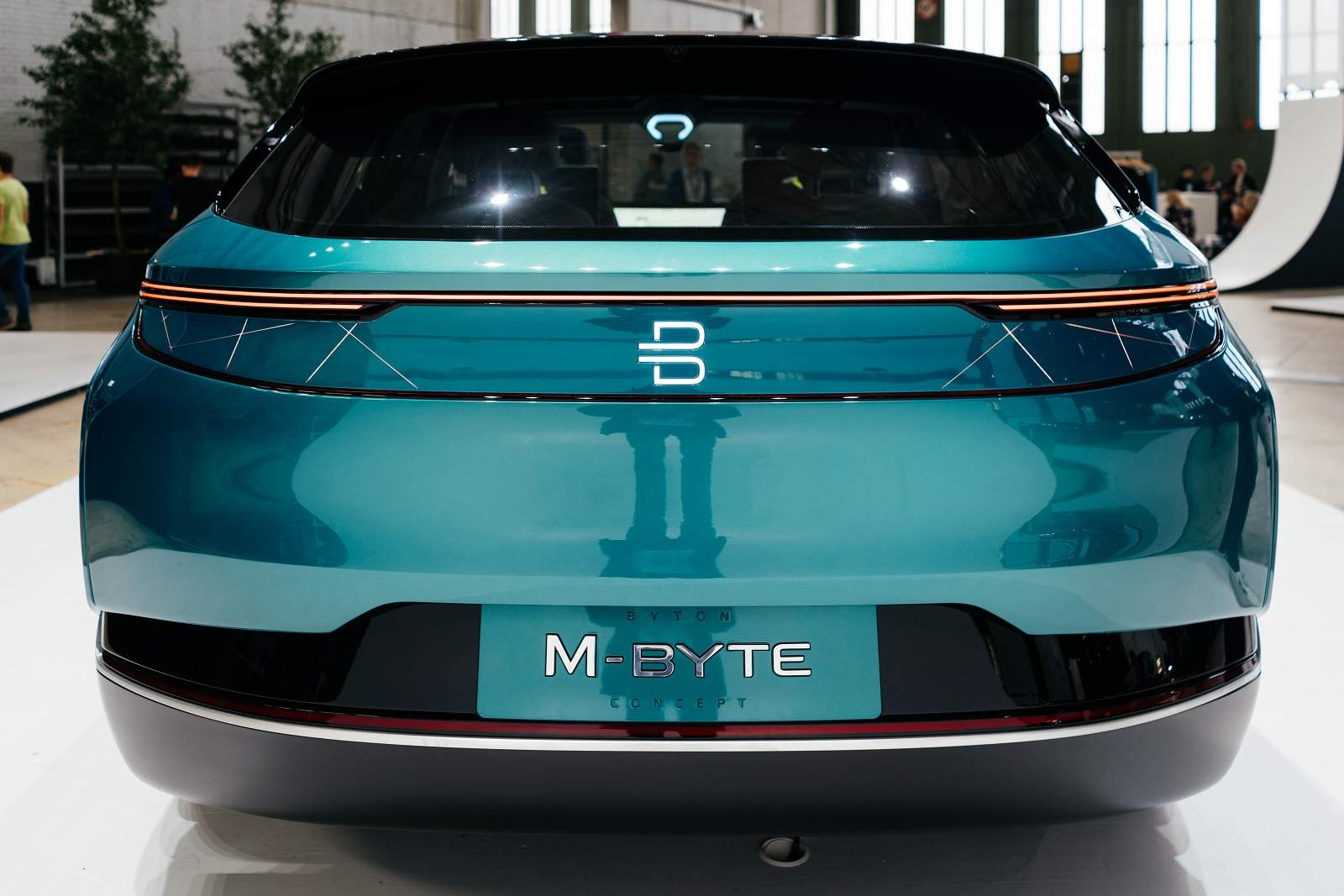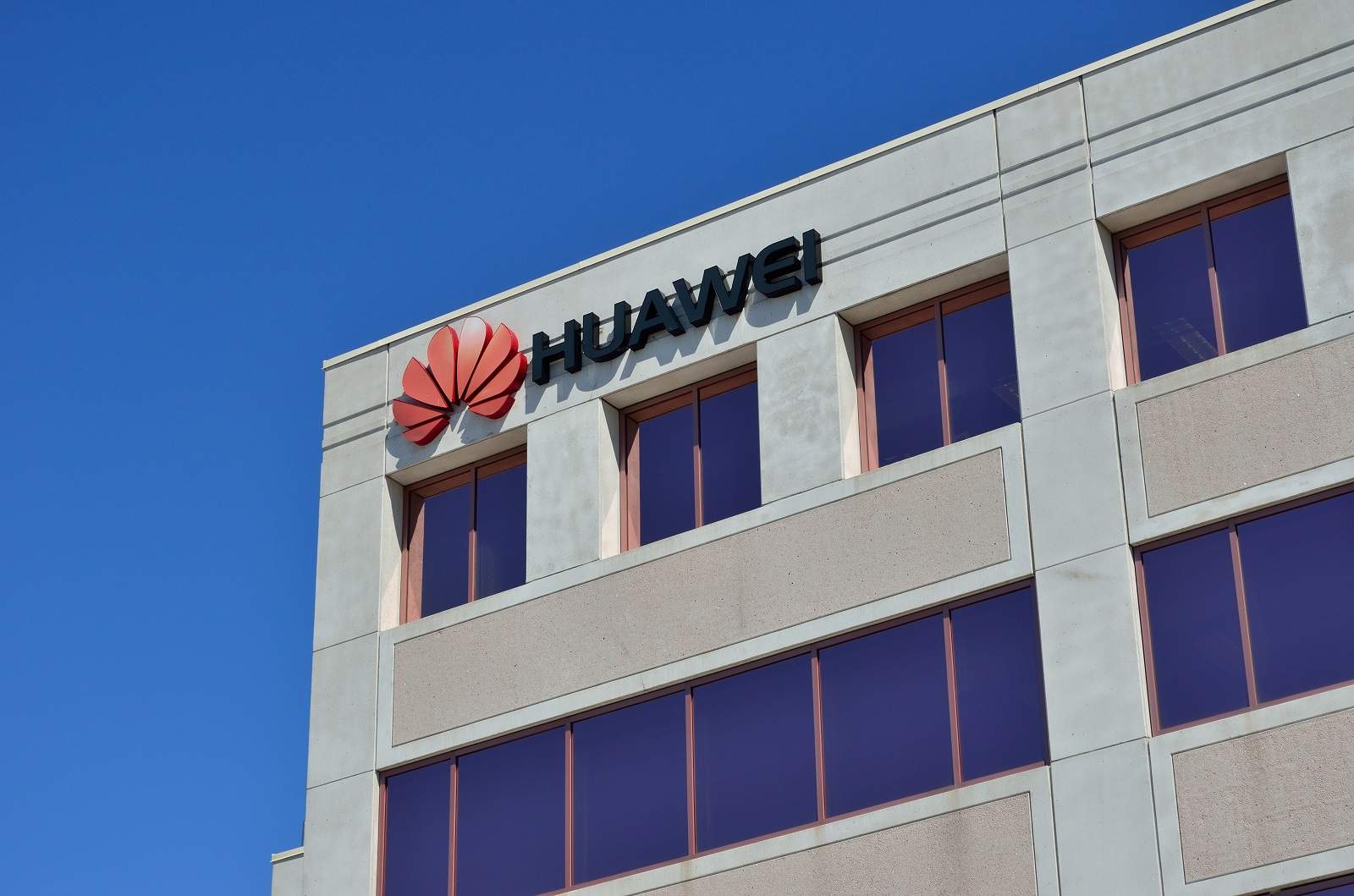JOHN LEE
KEY FINDINGS
 The Internet of Things (IoT) is connecting a growing range of economic and social activity across national borders, while simultaneously expanding the security challenges implied by these connections, including to Chinese state power.
The Internet of Things (IoT) is connecting a growing range of economic and social activity across national borders, while simultaneously expanding the security challenges implied by these connections, including to Chinese state power.Despite US-led efforts to exclude Chinese actors from digital networks worldwide, the economies of East and Southeast Asia are becoming more densely integrated with China through evolving IoT ecosystems and supply chains.
These trends threaten to disadvantage Australia and require policies to build up the country’s own technological capacities while devising innovative ways to manage, rather than avoid, the risks entailed in growing digital connections with China.
EXECUTIVE SUMMARY
The world is being transformed by expansion of the Internet of Things (IoT). The security challenges that go with this expansion require confronting the transnational character of these evolving technological ecosystems. Distrust of China and its ever-more pervasive presence in the transnational IoT is driving US efforts to diversify digital technology supply chains away from China, and to limit China’s presence in global digital connections. But these efforts are unlikely to shift the established trend among East and Southeast Asian countries towards deepening integration with China. The cyber-physical nature of IoT ecosystems reinforces China’s advantages as a global manufacturing hub. And the complex features of these supply chains generate inertia against relocating them to politically trusted jurisdictions (“re-shoring” or “friend-shoring”). This is illustrated through case studies of the automotive sector’s transition towards electric and intelligent connected vehicles, and the expansion of “smart city” ecosystems. Exposure through these ecosystems to Chinese actors and therefore Chinese state power will increasingly become the price of access to the wider regional economy, even as US pressure to align against China grows. As powerful governments set the “terms of engagement” for participating in transnational technological ecosystems, “technology takers” will be disadvantaged. In response, Australia will need to build up its own technological capacities and find innovative ways to manage, rather than avoid, the risks implied by rising digital connections with China.
INTRODUCTION
The world is being transformed by the rise of the Internet of Things (IoT). In 2020, there were an estimated 12 billion “intelligent” devices worldwide connected through the internet. By 2030, there could be 125 billion. The world will be increasingly populated with internet-connected “cyber-physical” ecosystems, including intelligent vehicles, “smart cities”, and a host of other applications. These transnational IoT ecosystems will account for a growing share of global economic activity, as the internet is increasingly extended to new applications and objects in the physical world.[1]
As the IoT becomes ever more present throughout society, it amplifies the security risks inherent in connection through the internet, massively expanding the potential for data theft, the compromising of digital systems, and disruption in the physical world.[2] Securing the IoT against distrusted actors is not only a matter of technical cybersecurity: the transnational distribution of IoT supply chains also matters — setting a collision course between issues of political trust amongst governments and the operation of global market forces.
The East and Southeast Asian region is Australia’s neighbourhood and best source of future economic opportunity.
In response to these issues, the United States is seeking to diversify transnational digital technology supply chains away from China — and cajole other states to follow. Canberra is likewise promoting alternative digital technology choices to those offered by Chinese actors.[3] Yet, the countries of East and Southeast Asia continue binding themselves to China through the production and consumption networks that constitute the IoT, resulting in denser digitally-connected relations.
The East and Southeast Asian region is Australia’s neighbourhood and best source of future economic opportunity. The measures seen to date from Washington and like-minded partners are unlikely to stem the growth of transregional IoT ecosystems in which China is deeply embedded, and which are therefore exposed to Chinese state power in terms of both economic leverage and risk of digitally-enabled espionage or sabotage. Australia may therefore find itself facing a difficult choice between a poorer future outside a region digitally connected with China and a riskier future within it. This paper reviews how China is increasingly embedded within the IoT ecosystems and digital supply chains of East and Southeast Asia and argues that economic imperatives towards deepening integration with China continue to trump regional distrust of Beijing. The analysis discusses the security challenges posed by digital connections with China and argues that efforts to untangle this “Gordian knot” of interdependence with China are unlikely to succeed. The paper uses case studies on the automotive sector (electric and intelligent connected vehicles — EVs/ICVs) and smart cities to show how the evolution of IoT ecosystems is binding the region closer to China. Its final section discusses implications for Australia of the politicisation of transnational technology ecosystems.
STRATEGIC OUTLOOK: ECONOMIC REWARD TRUMPS FEAR OF CHINA
Beijing’s actions in the South China Sea and its improving capacity to project armed force abroad are concerning to countries across East and Southeast Asia. But even Taiwan, facing unique security challenges from China, is allowing its leading digital technology firms to continue integrating the Taiwanese economy and transregional supply chains with China’s economy. There are few signs that these Taiwanese companies will alter their operations or be forced to do so by Taipei. It follows that other regional states are even less likely to find the political will to make changes.
East and Southeast Asia are among the most trade-integrated regions in the world, reflecting a decades-long rise in intraregional trade networks within which China has now become the most important player. Over the last ten years, China has doubled its share of total foreign direct investment into Southeast Asia, which is now concentrated in manufacturing, reflecting China’s deepening integration into regional production networks well beyond the country’s original role as a cheap manufacturing assembly hub.[4]
 Chongqing, the largest municipality in China, is one of the most important economic centres in the country and has become the biggest automobile manufacturing base in China. Image captured via Copernicus Sentinel-2 (European Space Agency/Flickr)
Chongqing, the largest municipality in China, is one of the most important economic centres in the country and has become the biggest automobile manufacturing base in China. Image captured via Copernicus Sentinel-2 (European Space Agency/Flickr)Southeast Asian leaders and diplomats have consistently highlighted this economic relationship to explain their reticence towards initiatives motivated by security competition with China.[5] While Japanese and Korean leaders have shown an appetite for limited coordination with the United States on supply chains for critical technologies, they remain divided on priorities concerning Beijing. Meanwhile, Japanese and Korean industry continues to view China as an essential, if increasingly risky, partner.[6]
The response by Japanese firms to Tokyo’s efforts to promote relocation of manufacturing away from China has been anaemic; a September 2020 survey of Japanese companies operating in China found fewer than one in ten was considering moving production elsewhere.[7] China accounts for 16 per cent of inputs to South Korea’s manufacturing sector and almost a quarter of South Korea’s exports; the latter are dominated by intermediate goods, creating a structural interdependence with China.[8]
Across the region, distrust of China — of which there is evidently no shortage[9] — appears insufficient to reverse the trend towards denser economic and digital connections. Even Japan’s changing China policy is best described as a circumscribed reset; not a “decoupling”. Recent data suggests that foreign firms remain cost-sensitive when deciding whether to move operations out of China.[10] The combination of advantages provided by China’s markets, infrastructure, established ecosystems of suppliers, and research and development (R&D) capabilities has entrenched its role as an international economic hub, reinforced by the hybrid digital and physical nature of IoT supply chains.
REGIONAL INTEGRATION: CHINA AND THE IOT
The IoT is a complex of cyber-physical systems, built on the integration of data transfers and software with hardware and manufacturing. In this arena, China has major advantages given its centrality in global electronics manufacturing, capabilities in software and electronics design, and enormous fast-growing markets for digitally-enabled products and services.[11] Technological advances and other factors — for example, the reconstitution of relevant skills in local workforces — have yet to reach the point where high-income economies can cost effectively “re-shore” many activities, while low-income countries struggle to replicate the combination and scale of China’s advantages in enabling infrastructure, suitably skilled labour, and favourable policies from government authorities.
State policy promotes integration of Chinese IoT solutions abroad with Chinese-provided services in digital currencies, blockchain applications, and other technologies in foreign projects under the “Digital Silk Road” rubric.
This does not mean that China will dominate all the “commanding heights” of the emerging IoT-based economy. Chinese industry still lags global leaders in many fields, including in critical elements such as semiconductors, which are essential components in almost all electronic devices.[12] What matters for the nexus of economic and security issues posed by the IoT’s expansion is that Chinese firms are increasingly present throughout these evolving ecosystems, and that Chinese markets and partners are increasingly entrenched in the operations of global industry leaders.Chinese authorities are using this leverage to “pull tight” transnational supply chains to their country. State policy promotes integration of Chinese IoT solutions abroad with Chinese-provided services in digital currencies, blockchain applications, and other technologies in foreign projects under the “Digital Silk Road” rubric.[13] Beijing’s ambition seems to be the development of a comprehensive digital interface for trade and logistics between China and the outside world that is closely monitored and regulated by Chinese authorities.[14] This extending presence of the Chinese state throughout transnational cyberspace creates a fundamental security challenge for other national actors that distrust the Chinese state and its potential exploitation of digital connections in view of the immense security vulnerabilities implied by the IoT’s expansion.
SECURITY OF THE IOT: DIGITAL ECOSYSTEMS AND THE CHINESE STATE
The IoT is composed of complex digital networks that integrate myriad devices running customised software and requiring regular updates from device manufacturers. The security of internet-connected networks depends on a multiplying host of hardware manufacturers, standardisation bodies, government regulators, and other actors that are increasingly situated outside the US-allied community. This significantly expands the “threat surface” exposed to cyberattacks and makes security assurance of IoT ecosystems a dynamic operation dependent on the trust placed in network participants.[15]
Few actors are less trusted by the United States and various other governments than the Chinese state, which is expanding its regulatory toolkit for imposing priorities on private sector actors — domestic and foreign — involved in China-integrated IoT ecosystems. For example, China’s new rules on critical information infrastructure (CII) allow a wide range of entities to be defined as “CII operators”, with their extensive obligations including instituting in-house cybersecurity teams vetted by China’s security agencies, and prioritising procurement from sources considered “secure and reliable” by Chinese authorities. Large Chinese internet technology firms are being subjected to more direct controls and official cybersecurity reviews by Chinese authorities, the triggers for which remain a “black box”.[16]
China’s new “anti-sanctions law” allows authorities to penalise foreign entities in retaliation for foreign government actions seen to discriminate against Chinese interests.
Beijing is building the world’s most comprehensive data regulation regime, one that privileges national security in governing all types of data on digital networks.[17] This regime includes local storage requirements, checks by state authorities prior to cross-border transfer to actors outside China, and Chinese government certification of encryption solutions.[18] In total, this regime gives Chinese authorities the option to access almost all data on Chinese networks, including that generated or held by foreign actors.
Beijing is also seeking to exert influence over data transfers that occur outside China’s borders but relate to Chinese interests. China’s new “anti-sanctions law” allows authorities to penalise foreign entities in retaliation for foreign government actions seen to discriminate against Chinese interests. Such scope for reprisal applies specifically to “data activities” under China’s recently enacted Data Security Law, which has extraterritorial jurisdiction.[19] Hong Kong is unlikely to provide a haven from such measures as it is increasingly subjected to the same rules as apply within China’s mainland territory.[20]
This approach reflects recognition of the security risks inherent in transnational IoT ecosystems. As an example, Chinese authorities are taking targeted measures to mitigate the risk of cross-border digital connections being exploited by foreign governments. These measures include restricting domestic use of Tesla vehicles to guard against US intelligence collection and curbing Chinese firms’ discretion to comply with disclosure requirements when listing on foreign stock exchanges in order to avoid exposing sensitive data or cybersecurity vulnerabilities.[21] Beijing is thereby setting the “terms of engagement” for participation in China’s IoT economy in ways that privilege China’s information security over that of foreign actors.
 Beijing employs a regulatory regime and uses pilot zones designed to promote cross-border data exchange in less sensitive categories, such as intelligent and connected vehicles (Denys Nevozhai/Unsplash)
Beijing employs a regulatory regime and uses pilot zones designed to promote cross-border data exchange in less sensitive categories, such as intelligent and connected vehicles (Denys Nevozhai/Unsplash)Simultaneously, this regulatory regime seeks a balance that facilitates transnational digital connections with pilot zones for liberalised international data transfer and sector-specific regulation designed to promote cross-border data exchange in less sensitive categories (see Case Studies on intelligent and connected vehicles and smart cities). The Chinese state is thereby trying to shape the evolution of transnational IoT ecosystems so as to build in for itself high levels of access to digital networks and data, in ways that foreign actors will find difficult to mitigate or even quantify. These security challenges stack on top of existing concerns about the Chinese state’s alleged international cyberespionage activities, which one senior US official claimed to have enabled “the greatest wealth transfer in history”, and which recently led to public condemnation of Beijing by Washington, Canberra, and other governments.[22]
This security dilemma has led to calls for Western democracies to severely restrict, and perhaps sever, connections with China’s digital networks and those of countries that fail to do so, while building separate systems within a walled garden of like-minded nations. Such thinking inspired the Trump administration’s “Clean Network” initiative to insulate US networks from exposure to Chinese actors through pressure on third countries’ technological choices. The Biden administration has not pursued such extreme measures, but it presides over a clear turn in US politics towards “re-shoring” supply chains by bringing production back with the United States, and pursuing an explicit technological contest with China to build transnational technological ecosystems.[23] These goals face great obstacles that stem not just from China’s entrenched role in East and Southeast Asia’s regional economy, but also from features of the information and communications technology (ICT) supply chains that underpin the emerging age of IoT.
SUPPLY CHAINS IN THE IOT AGE: UNTANGLING THE GORDIAN KNOT
ICT supply chains are extremely intricate, requiring long-term specialisation and large investments to be competitive at discrete points in the process. This has led to fragmented and transnational divisions of labour, with firms in different countries specialising in different production steps and processes. Rising performance requirements lead to rising technical complexity that augments supply chain complexity as firms develop extensive supplier networks in deepening layers of technical inputs.[24] This complexity is amplified with development of the IoT, which adds layers of software and hardware suppliers, and expanding numbers and types of devices based on these elaborate transnationally-distributed ICT supply chains.
For the East and Southeast Asian region, this trend corresponds with China’s rise as a manufacturing hub.[25] China-centric supply chain trade has driven the region’s economic integration for three decades.[26] Even in sectors where Chinese firms lack market-leading positions, the concentration of related industries and consumer demand in China creates a larger ecosystem that pulls in foreign industry leaders and suppliers.
With the Biden administration apparently not yet committed to pursuing a free trade arrangement with East and Southeast Asian countries focused on the digital economy, the latter are continuing to develop denser China-integrated supply chains and IoT ecosystems.
The result is massive inertia that works against substituting suppliers to shift an activity’s geographical location. “Onshoring” seems attractive to governments from a national security viewpoint, but the costs of achieving this at scale appear prohibitive in many of the supply chains on which the digital economy is built. Taking semiconductors as an example, one recent study estimates the cost of duplicating the global supply chain at a regional level to be more than US$1 trillion in up-front costs alone, with a potential rise by two-thirds in the price of end products, simply to meet 2019 consumption levels.[27]
This amounts to a “Gordian knot” of interdependence with China. To fully untangle these relations would require measures on a scale much greater than those provided in current US Congressional bills aimed at supporting technological competition with Beijing, or the Biden administration’s extant initiatives to promote reorientation away from Chinese technology and infrastructure providers worldwide.[28]The Gordian knot could perhaps be cut through expansion and escalation of coercive measures that force businesses to sever ties with China, of the same order as the US export controls targeting ICT giant Huawei’s access to semiconductor-related technologies. But signs to date suggest that the Biden administration is not pursuing this path, with senior US officials recently disavowing the goal of economic “decoupling” from China.[29] With the Biden administration apparently not yet committed to pursuing a free trade arrangement with East and Southeast Asian countries focused on the digital economy, the latter are continuing to develop denser China-integrated supply chains and IoT ecosystems, as illustrated by the following two case studies.[30]
CASE STUDY ONE: THE FUTURE AUTOMOBILE SECTOR
The global car and transport vehicle industry is moving rapidly towards replacing internal combustion engine models with electrically powered ones (EVs). This will be followed by stepped progression towards intelligent connected vehicles (ICVs) with autonomous driving capabilities and other internet-based functions. Limited ICV technologies are already in use on models in commercial production.
Governments are helping drive this transition, with the European Union recently adopting a net-zero carbon emissions target for 2050, and more than 20 countries, including half the world’s ten largest economies (China among them), having committed to 100 per cent vehicle electrification by 2040. By one forecast, in 2030 EVs will account for 40 per cent of new vehicle sales globally, with China a growth leader.[31] This electrification trend will be accompanied by transformation of vehicles into IoT platforms. Another estimate projects that by 2030, 95 per cent of new vehicles sold worldwide will be connected to the internet. The global market for vehicle-centric connected services such as predictive navigation could amount to $US81 billion by 2030, with around half this demand expected to be accounted for by China.[32]
 Electric vehicles are forecast to represent 40 per cent of new vehicle sales globally by 2030, with China a growth leader (Michael Marais/Unsplash)
Electric vehicles are forecast to represent 40 per cent of new vehicle sales globally by 2030, with China a growth leader (Michael Marais/Unsplash)The technological changes involved with this transition are allowing Chinese carmakers to rapidly gain ground in an industry dominated for decades by foreign incumbents. Simpler engineering requirements, availability of locally developed artificial intelligence (AI) solutions, local concentration of component suppliers — especially for the single most important and costly element in an electric vehicle, the battery[33] — and copious investment funding have all combined to enable rapid progress by Chinese EV manufacturers. The Chinese state has assisted by promoting growth of enabling infrastructure such as 5G telecommunications networks and providing long-term support for the development of IoT technologies and regulatory measures to accelerate EV/ICV development.
China is the world’s biggest national EV market, and domestic overcapacity combined with the phased reduction of government subsidies is driving Chinese EV vendors to seek export markets, with some firms already offering internationally competitive products. Conversely, foreign multinationals are investing in China, not just as a market, but as an export production base and location of R&D partners.[34] For example, Chinese AI leader Baidu’s Apollo self-driving technology consortium includes various leading foreign corporations such as Volkswagen, Toyota, and Ford, alongside US computing giants Nvidia and Intel.[35]
Some foreign multinationals such as Volkswagen are effectively tying their fortunes to China, with the German autogroup now estimated to earn half or more of its profits in China.[36] Volkswagen aims to sell 28 million fully-electric vehicles globally by 2028, with more than half these sales generated in China, where Volkswagen models carry more advanced computer processors compared to the group’s models sold in Europe, reflecting Chinese consumers’ demands for digital services. China will also be Volkswagen’s production base for exports to the rest of the region.[37]
Volkswagen alone is investing €15 billion on R&D inside China over the next four years, while its Japanese rivals have multiple local R&D centres and partnerships.
China’s automakers long lagged global leaders in technical performance, but China’s innovation ecosystem supporting EV/ICV development now benefits from significant contributions by multinationals. Volkswagen alone is investing €15 billion on R&D inside China over the next four years, while its Japanese rivals have multiple local R&D centres and partnerships. Global EV leader Tesla has based its China operations on localised “original engineering” and open-sourced patents, using Chinese talent for software development and design of factory processes and cars.[38] In the race for position within a global automotive industry that is rapidly becoming a branch of the IoT, established multinationals are playing catch-up with Tesla and a host of Chinese start-ups that have prioritised development of software-based and internet-connected technologies.
In 2020, China accounted for 41 per cent of global EV sales, compared to one per cent for Japan as the next largest Asian market.[39] This is helping drive rapid advancement of “Internet of vehicles” technology in China. The global industry body 5G Automotive Association recently described China as “at the forefront” of developing what will likely become a global technical standard for autonomous driving.[40] China is currently the only country where commercially available cars already use the networking standard C-V2X — Cellular Vehicle-to-Everything — technology that connects vehicles to each other, to roadside infrastructure, and to other road users.
Taiwan’s Foxconn provides another example of how China is entrenching its place in the “Internet of vehicles”. Foxconn, which recently debuted its first series of electric vehicle models, aims to break into the sector through an “open platform” approach comparable to the introduction of Google’s Android into the mobile device applications market.[41] Foxconn’s partners in the project include the Chinese EV start-up Byton and leading Chinese carmaker Geely, which has a partnership with Baidu to develop self-driving technologies. Geely also controls Malaysia’s Proton, which could in future deploy AI and IoT solutions built by Chinese firms in its quest to become Southeast Asia’s third-ranked carmaker.
 Chinese electric vehicle (EV) start-up Byton has partnered with Taiwanese electronics manufacturer Foxconn (Marco Verch/Flickr)
Chinese electric vehicle (EV) start-up Byton has partnered with Taiwanese electronics manufacturer Foxconn (Marco Verch/Flickr)These activities illustrate how the EV/ICV ecosystem’s growth is embedding China-integrated supply chains across the region. Foxconn’s initial EV models in China will likely be built by Chinese firms but equipped with Japanese-developed self-driving AI.[42] For EV motors and batteries, Foxconn is partnered with Japan’s Nidec and Taiwan’s Giga Solar Materials, which have R&D operations in mainland China.[43] China’s CATL, which supplies almost a third of the global EV battery market, is another key partner in Foxconn’s plans.[44]
Other Taiwanese electronics and digital technology companies are also expanding their operations in China.[45] And some of Southeast Asia’s bigger economies are deepening commercial integration with the country as they seek to win a share of the growing EV/ICV supply chain. Indonesia, for instance, will soon host an EV battery plant built by CATL, while other Chinese interests are building the country’s two largest nickel processing plants to support EV battery production.[46] With Indonesia positioning itself to become Southeast Asia’s carmaking hub, Chinese actors may emerge as integral players in what could soon be the world’s fastest-growing EV market. To quote Elon Musk, for the global automobile industry, “China is the future.”[47]Australia will have constrained choices regarding this future, reflected in recent CSIRO modelling that suggests by 2035 all new vehicles sold in Australia could be EVs. Australia is already importing Tesla models made in China, and EV models produced by the Chinese company BYD. The fact that BYD’s 5G-connected cars run an operating system developed by Huawei highlights the trade-offs in consumer choice, economic logic, and security risks that Australia will increasingly face in a future populated with IoT ecosystems.[48]
CASE STUDY TWO: SMART CITIES
“Smart city” is a loosely defined term, encumbered with a “dearth of quantifiable knowledge regarding the scope and nature of… technologies and the possible risks”.[49] It encompasses a range of public infrastructure and utility management and delivery solutions — from policing and traffic optimisation to healthcare services delivery — enabled by IoT technologies. By one estimate, over a thousand smart cities are in development worldwide, significantly expanding the potential to improve individual welfare and economic growth. In concert with these benefits, however, are a range of potential outcomes that have implications for civil liberty and security, including mass surveillance, data theft, and disruption by malicious actors.[50]
China has systematically developed smart city applications and is increasingly exporting them.[51] The role of Chinese technology firms in enabling Beijing’s domestic surveillance apparatus raises concerns about their activities abroad. For example, an ongoing lawsuit by a US firm that partnered with Huawei to deliver smart city policing services in Pakistan alleges that Huawei extracted sensitive data including tax records and national ID card records.[52]
Despite efforts to coordinate digital economy policy through the ASEAN apparatus, Southeast Asian states are still essentially pursuing separate development agendas and foreign partners.
Growth in smart cities will likely track expansion of the internet-based economy. The e-commerce market of the Association of Southeast Asian Nations (ASEAN) is projected to triple over 2020–2025 to US$300 billion, with Indonesia alone accounting for US$124 billion. Despite efforts to coordinate digital economy policy through the ASEAN apparatus, Southeast Asian states are still essentially pursuing separate development agendas and foreign partners. They have become battlegrounds for US and Chinese technology giants, which are investing in local start-ups and cloud computing infrastructure.[53]
In designated smart city development partnerships, Chinese actors are far from dominant in the ASEAN states. But they are increasingly prominent in the internet-connected infrastructure and industries that provide the foundation and context for smart city evolution. Chinese firms, for example, now account for more than 20 per cent of ASEAN’s cloud computing market, which grew by 50 per cent during 2020. The following discussion of three ASEAN economies illustrates how Chinese firms are expanding their presence in IoT ecosystems serving urban populations, which are projected to grow by 90 million over the period 2015–2030.[54]
Singapore
Singapore’s government plans to transform the city-state into a smart nation through digital technologies. Although Chinese technology firms have been expanding R&D operations in Singapore — including in such security-sensitive areas as AI-enabled facial recognition — they do not have an extensive presence in Singapore’s infrastructure. But while the nation’s telecoms operators chose European firms rather than Huawei to equip their core 5G networks, Singapore is building its wider IoT future around integration with China.[55]
The express intent is to integrate Singapore’s innovation ecosystems with those of China, and cement Singapore’s role as the gateway for Chinese firms to other ASEAN economies. In 2020, Singapore signed multiple agreements with the Chinese city of Shenzhen under a Smart City Initiative. The aim is to build “deeper digital linkages” with China’s Greater Bay Area, one of the hubs of China’s IoT-based economy.[56] For instance, Singaporean ICT engineering and systems integration group NCS has recently opened an innovation centre in Shenzhen to jointly develop IoT projects with Chinese actors, with self-driving vehicles proposed as an initial collaboration. Singapore’s state-owned transport operator has also partnered with a Shenzhen-based company to provide EV solutions in Singapore and around Southeast Asia.
 Although Chinese technology firms do not have an extensive presence in Singapore’s infrastructure, the city-state is building its wider IoT future around integration with China (Mike Enerio/Unsplash)
Although Chinese technology firms do not have an extensive presence in Singapore’s infrastructure, the city-state is building its wider IoT future around integration with China (Mike Enerio/Unsplash)Singapore is also a pilot location for China’s state-managed Blockchain Services Network (BSN), which provides data exchange infrastructure for digital payments and other blockchain-based applications. The BSN provides the potential foundation for a cross-border trade and logistics interface that is designed to Beijing’s preferences, which will promote co-development with Chinese actors of IoT ecosystems and other digitally-enabled applications.[57] Related to this, Singapore is engaged with Beijing in bilateral negotiations for regulation of cross-border data transfers.
Singaporean authorities seem confident in their ability to manage the conflicts of expanding digital connections with China while simultaneously doing so with countries such as Australia and the United Kingdom that publicly identify Beijing as a malicious actor in cyberspace. Their apparent approach is to compartmentalise and firewall these various international partnerships, as well as the role of Chinese technology and connections in Singapore’s digital networks.[58] These types of partnerships will not turn Singapore into a subsidiary of China’s IoT economy, but they are binding the two countries closer and so entrenching the preference of Singaporean leaders to work with, rather than against, Beijing — advice that they have offered to Canberra.[59]
Malaysia
In 2018, Malaysia reached agreement with the Chinese company Alibaba to equip its capital city with the latter’s “City Brain” platform. The Kuala Lumpur platform employs a cloud service that uses video feeds, social media, and other AI to deal exclusively with traffic and environmental management and urban planning. This contrasts with the use of the same platform in Chinese cities such as Shanghai and Hangzhou, where the system integrates mass surveillance and facial recognition technologies.[60] Like their Singaporean counterparts, Malaysian authorities seem confident in compartmentalising their country’s use of Chinese digital technologies and connections with Chinese technology providers.
 Since 2018, Chinese company Alibaba has provided the technology to run Kuala Lumpur’s “City Brain” platform, which uses video feeds, social media, and other AI to deal with traffic and environmental management and urban planning (Esmonde Yong/Unsplash)
Since 2018, Chinese company Alibaba has provided the technology to run Kuala Lumpur’s “City Brain” platform, which uses video feeds, social media, and other AI to deal with traffic and environmental management and urban planning (Esmonde Yong/Unsplash)In another example, the Malaysian Ministry of Communications and Multimedia in early 2021 announced they would establish a joint cybersecurity lab with Huawei.[61] While Malaysia has chosen Swedish firm Ericsson to equip its 5G networks — likely due to Ericsson agreeing to facilitate financing, a type of deal often associated with Chinese vendors — its telecoms operators are participating alongside Huawei in a newly-established regional industry association for 5G and IoT ecosystem development. The group, Asia Pacific (APAC) 5G Industry Community, includes Thai, Filipino, and Indonesian telecoms operators, but no US companies.[62]
How this will be reconciled by the Australian government, with its own zero-risk policy on Huawei and its closer digital economy and cybersecurity exchanges with Malaysia, remains to be seen. A potential complicating factor is Australia’s military presence at Malaysia’s Butterworth airbase. Huawei’s local 5G infrastructure has already presented serious problems for US military partnerships with other countries, for instance the United Arab Emirates.[63] Malaysia’s approach shows how regional countries are proceeding with cost-benefit calculations over digital integration with China that clearly differ from Canberra’s.
Indonesia
ASEAN’s largest economy aims to join the world’s five largest economies by 2045 through digital transformation. Indonesia’s plan includes capitalising on the IoT through development of its EV/ICV industry, a “100 Smart Cities” target, and a built-from-scratch US$33 billion new capital city funded primarily through private investment.[64] These ambitions face many obstacles, but Indonesia’s scale means it will nonetheless likely be the region’s biggest market for smart city services.[65]
 Indonesia, ASEAN’s largest economy, aims to join the world’s five largest economies by 2045 through digital transformation (Muhammad Syafi Al/Unsplash)
Indonesia, ASEAN’s largest economy, aims to join the world’s five largest economies by 2045 through digital transformation (Muhammad Syafi Al/Unsplash)Indonesian authorities are avoiding exclusive dependence on Chinese partners.[66] But they are keeping the door open to Chinese technology providers. Huawei for example, which remains in contention to equip Indonesia’s 5G rollout, partnered with Indonesia’s Agency for the Assessment and Application of Technology in late 2020 to develop and implement AI, cloud computing, and 5G. In another example of cooperation, a consortium of Indonesian and Chinese state-owned enterprises is building the high-speed rail link from Jakarta to Bandung, which is expected to integrate with other infrastructure in Indonesia’s two leading digital technology hubs.[67] In January 2021, Indonesia’s cybersecurity agency signed a memorandum of understanding with Beijing on capacity building and technological development.
Given the existing position of Chinese businesses in Indonesia’s digital economy, Indonesia appears set to become an enormous market for Chinese IoT providers. General political and economic conditions favour expanded China–Indonesia digital integration.[68] As one of five nations identified in Canberra’s 2017 Foreign Policy White Paper as “central to [Australia’s] agenda”, Indonesia’s choices over IoT development could prove critical in shaping the larger digital environment within which Australia defines its relationship with China.[69]
THE POLITICISATION OF TRANSNATIONAL IOT ECOSYSTEMS
Australia’s prime minister recently declared that “nations at the leading edge of technology have greater economic, political, and military power…and, in turn, greater capacity to influence the norms and values that will shape technological development”. Worldwide, such thinking is driving governments towards an industrial policy and security-oriented approach to international commerce, which prioritises political control over supply chains. Firms are responding by developing partially bifurcated technological ecosystems, tailored to different jurisdictions as the political environment requires.[70] The “terms of engagement” for participating in these ecosystems will increasingly be set by governments on a political basis. This will disadvantage parties that lack either political power or the leverage that goes with upstream positions in supply chains, even if they provide valuable products and services.
Taking the semiconductor sector as an example, a recent study shows that while Australia produces world-leading researchers in relevant fields, most of the value that these individuals generate is captured by the US corporations that employ them. Similarly, European economies’ research strengths in semiconductors have translated relatively little benefit into scalable commercial products and revenues. By contrast, US firms’ dominance in upstream segments of the supply chain has translated into enormous revenue capture and international political leverage, exercised by Washington against Chinese firms like Huawei.[71]
 The dominance in upstream segments of the supply chain by US companies has translated into enormous revenue capture and international political leverage, exercised by Washington against Chinese firms such as Huawei (Grid Engine/Flickr)
The dominance in upstream segments of the supply chain by US companies has translated into enormous revenue capture and international political leverage, exercised by Washington against Chinese firms such as Huawei (Grid Engine/Flickr)To capture higher-value roles across a range of economic sectors in the future, Australian firms should target East and Southeast Asian markets. Comparable opportunities are unlikely to be available in Europe or the United States, where Australian businesses will find it hard to compete with local firms that have comparable or superior capabilities and are increasingly favoured by domestic industrial policy. The recent record of US businesses supplanting Australian exporters to Chinese markets suggests poor prospects for political solidarity translating into economic solidarity towards Beijing if this involves costs to domestic firms. And India must overcome many obstacles before it can offer an alternative to East and Southeast Asia in IoT ecosystems and associated markets.[72]
The countries of East and Southeast Asia have given strong signals that their strategic priorities will orient them towards growing economic and hence digital integration with China. This will increasingly put Australia in invidious positions as US–China technological and economic competition intensifies. For example, as Indonesia tries to build an EV industry by combining Chinese battery technology with Australian lithium exports, curbing such exports at US request would both harm relations with Jakarta and jeopardise Australian firms’ access to one of the most promising opportunities to participate in the EV/ICV sector. This is not a fanciful scenario given existing US–Australian coordination on critical minerals and the Biden administration’s emphasis on allied cooperation over export of battery precursors.[73]
CONCLUSION
The IoT’s growth offers great opportunities for productivity gains and rising economic prosperity. But Australian businesses’ international competitiveness and potential to scale up applications will be restricted by the global politicisation of advanced technologies, unless compensated for by the influence that comes from holding high-value positions in these ecosystems. Canberra is taking steps to promote this goal, while recognising that Australia will remain a net technology importer.[74] Even within like-minded international partnerships, better outcomes will result if Australian actors hold strong positions as technology creators.
Australian providers of AI, financial technology, advanced materials, and other future-oriented services will find their greatest opportunities in the ASEAN countries’ fast-growing markets in EVs/ICVs, smart cities, and other IoT sectors. But in these internet-connected ecosystems, exposure to Chinese actors will be increasingly unavoidable, with limited visibility of how much and to what extent data and digital systems are accessible to the Chinese state. Even Australia’s export commodity trade may soon come to depend on digitised logistics management systems integrated with Chinese systems that are closely regulated and monitored by Chinese authorities.[75] Accepting such risks in cyberspace vis-à-vis Beijing will progressively become a condition of access to the wider regional economy.
This path forward will require thinking creatively about managing, not avoiding, interconnection with China in digital networks.
Partnerships within the US allied community are a necessary but not sufficient condition for Australia to navigate this challenge. Canberra must find an approach that is sustainable in terms of both cybersecurity and long-term economic security. This will most likely take the form of a degree of “weaponised interdependence” with China in IoT ecosystems, analogous to the Cold War’s managed balance in nuclear weapons.[76] For example, China’s massive vulnerabilities in cyberspace in relation to the US allied community create opportunities for deterrence against Beijing’s exploitation of the inherent interconnectedness of the IoT.[77]
This path forward will require thinking creatively about managing, not avoiding, interconnection with China in digital networks. If Chinese actors will be unavoidably present in the region’s digital systems, it is better to accommodate them in global standards-setting organisations in which Western actors still exercise dominant influence, rather than incentivising Chinese actors to work within domestic technical standardisation processes that shut out foreign actors. To this end, Australia may need to abandon free trade orthodoxy in cyberspace and unilaterally mandate data localisation and ICT supply chain procurement controls. And the current legislative push to require that the private sector meet state-specified cybersecurity standards, report cyberattacks to government, and provide security agencies with compulsory access to digital networks indicates the “terms of engagement” that will increasingly be imposed on Australian firms by their own government as a condition of access to a global economy connected by the internet.[78] As Australia’s economic and security interests are increasingly brought into conflict by the politicisation of transnational technology ecosystems, the country must respond by becoming a stronger actor in these ecosystems and one unafraid to chart its own way.
No comments:
Post a Comment